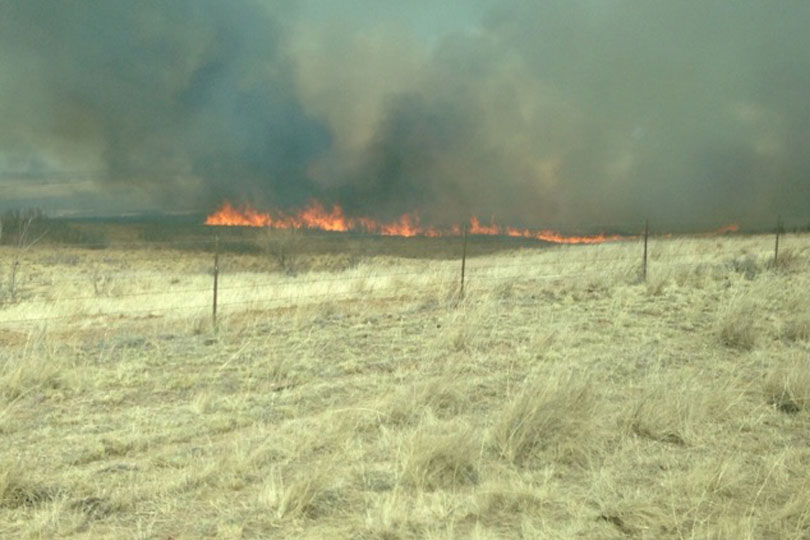By Jennifer Whitlock
Field Editor
Several wildfires broke out across Texas, Oklahoma and Kansas last week due to a combination of high winds, drought and above-normal temperatures.
In Texas, three large wildfires—the North 207 in Carson County, Parker Creek in Oldham County and Belcher Complex in Wichita County—burned over 23,000 acres before being successfully contained.
Areas west of I-35 are expected to see increased wildfire activity this week, as well, according to the Texas A&M Forest Service (TFS) Predictive Services Department weekly Texas Fire Potential Update.
Friday, Dec. 24, is predicted to be the period with the strongest potential for fire activity. A strong southwest wind, warm temperatures and low relative humidity create “moderate potential for significant fires on the High Plains and Rolling Plains,” according to TFS.
But portions of Texas stretching from the Panhandle, north of Amarillo and down south of Austin through the Hill County contain a significant amount of freeze- and drought-cured grasses, which increase the risk for accidental ignition and facilitate the quick spread of fires.
Wildfire mitigation and prevention
Landowners and residents are asked to be prepared and do their best to mitigate fire risks. TFS said people and human activity cause more than 90% of all wildfires in Texas, with the top cause being careless debris burning.
Carelessly-discarded smoking materials, vehicle exhaust systems and sparks from welding or grinding equipment are other common causes of accidental fires.
Precautions landowners and homeowners can take include assessing property for hazards and risks and then correcting or minimizing those issues where possible.
Examples include clearing excess and dead plant material within 30 feet of any structure and creating gravel or soil fire breaks around homes and buildings. TFS also recommends planning which emergency actions will be taken by each individual in the event wildfires do occur.
Resources on wildfire readiness, prevention and recovery are available through Texas A&M AgriLife Extension’s Disaster Education Network.
Additional information on wildfire prevention, active county burn bans and daily fire danger warnings can be found on the TFS website.

